Understanding Tiny Household Ants: Biology and Control
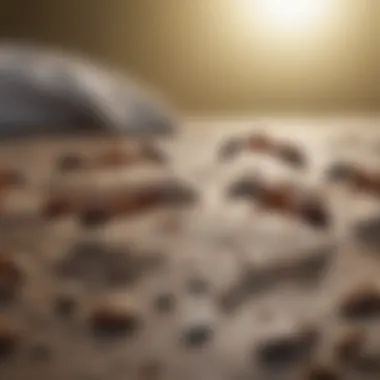

Preventive Pest Control Strategies
When it comes to keeping tiny household ants at bay, preventive pest control strategies are the first line of defense. This proactive approach can save you from a lot of headaches down the road. Below, we’ll delve into practical methods to safeguard your home from these little invaders.
House Exterior Protection
Tips for sealing cracks
Cracks in your home’s exterior are like open invitations for ants and other pests. It is wise to inspect the foundation, window frames, and doors for any small openings. To effectively seal these cracks, you could use caulk or expandable foam that expands to fill gaps.
Clearing debris
Ants thrive in untidy environments. By keeping the exterior of your house free from debris—like leaves, branches, and other organic waste—you make it less attractive to these pests. Regularly sweeping walkways or using a leaf blower can do wonders in keeping things tidy.
Preventing pests from entering
In addition to sealing entries, consider maintaining a barrier around your home. If you have a garden, use gravel or mulch as it can deter ants from venturing too close to the foundation.
Yard Maintenance
Essential yard care routines
Maintaining your yard isn’t just about aesthetics; it plays a vital role in pest prevention. Regular mowing, trimming, and watering can reduce the chance of creating a habitat conducive to pest invasion.
Methods for keeping yard pest-free
Planting natural deterrents, like mint or marigolds, can assist in repelling certain pests. These plants not only enhance your yard’s appeal but also provide a natural defense mechanism.
Indoor Cleanliness
Expert cleaning tips and techniques
A clean home is less inviting for unwanted guests. Keep counters free from food debris and spills, and remember to do a thorough vacuuming to get into corners and crevices where crumbs might hide.
Maintaining a pest-resistant indoor environment
Consider utilizing airtight storage containers for foods, especially sweets and snacks. Proper storage is essential in preventing temptations for ants.
Garbage Disposal
Efficient waste disposal methods
Ensuring your trash is managed properly is crucial. Use trash cans with lids to prevent odors from attracting pests. Moreover, take out the trash regularly to minimize the likelihood of attracting ants.
Importance of proper garbage disposal
Ensure to clean your trash bins periodically. A clean bin means no residue, which can lead to a pest-free home.
Other Pest Prevention Strategies
Innovative ways to safeguard your home
Aside from common strategies, consider using physical barriers, such as ant baits placed strategically around the yard and house. These can dissuade ants from entering and can help in monitoring their activity.
Identifying Pest Risk Areas
Moisture Prone Areas Inspection
Identifying damp conditions
Water is a magnet for ants. Check places like under sinks, around the refrigerator, and in basements. Address any leaks, as damp areas provide a suitable environment for ants.
Tips for preventing infestations
Using dehumidifiers in moisture-prone locations can greatly reduce the likelihood of an infestation. Keeping humidity levels low makes your home less appealing.
Crack and Crevice Inspection Guide
Importance of inspecting access points
Regular inspections are important in identifying potential entry points for ants. Make it part of your routine to check those hard-to-reach areas regularly.
Strategies for sealing cracks and crevices
In addition to using caulk, utilizing mesh screens or weather stripping can also block ants from finding their way into your home.
Greenery Inspection for Pest Risks
Understanding greenery's impact on pests
Plants can act like highways for ants. Be aware of how close your plants are to the home, as ants will use them to gain access.
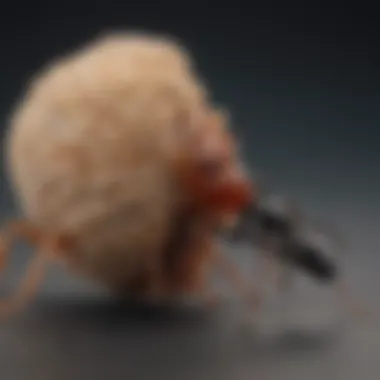
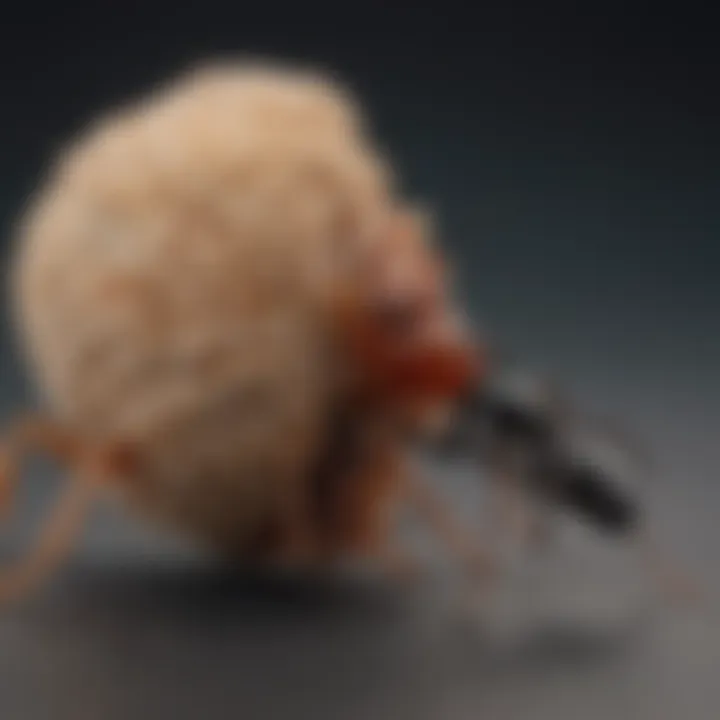
Guidelines to maintain pest-free yards
Regular pruning and keeping plants trimmed away from your house reduces the chances of ants crossing the line from nature to your home.
Additional Pest Risk Areas
Miscellaneous pest risk areas and preventive measures
Don’t forget about areas like the attic and garage. These spaces can collect dust and debris, which could also attract pests. Keeping storage areas tidy can reduce pest risk.
Summary: Effective pest prevention is about layers—using several strategies in tandem offers the best chance at a pest-free home.
Prologue to Tiny Household Ants
Ants may be small, but they can stir up noticeable havoc in our homes. The significance of tiny household ants goes beyond their size; understanding them is vital for effective control and management. By examining these tiny creatures, one can uncover a host of insights into their behaviors, habitats, and the potential threats they pose. Essentially, nurturing a grasp on the world of ants fosters a sense of preparedness in dealing with unwanted visitors.
Here, we will break down the critical motives behind studying tiny household ants. Knowing what you're dealing with equips home owners to make informed decisions when unexpected swarms invade their personal spaces.
Understanding Ants in the Household Context
When a few ants crawl across the kitchen floor, it may seem like a minor annoyance. However, their presence often hints at deeper issues. Ants do not just wander into homes aimlessly; they are on a mission primarily driven by the search for sustenance and a suitable habitat. Unfortunately, your pantry could be the slippery slope of their plans. Understanding the context of their appearance in households can shed light on how to thwart their advances.
- Nesting Behavior: Tiny household ants typically establish colonies nearby. They may make their homes in the walls, under floors, or in the soil adjacent to the house. Recognizing where these nests might be located can provide insight into potential entry points.
- Food Sources: Different species of ants in the home have varied food preferences. For instance, while some ants might gravitate towards sweet substances, others enjoy protein-rich morsels. This understanding helps in reducing offerings from our end.
- Daily Activities: The life of ants thrives on routine. They usually send out scouts to find food, and these scouts leave scent trails to guide others back. This insight into their foraging methods provides homeowners a significant edge in designing effective barriers against them.
- Invading Behavior: More often than not, tiny household ants invade for survival, especially during extreme weather conditions or when resources are scarce. Once aware of these patterns, one can better predict their invasions and mitigate potential infestations.
The Importance of Studying Ants
Knowing more about household ants can significantly impact how we coexist with them – or how to send them packing, once and for all. Here are a few compelling reasons to dive deeper into the study of these minuscule creatures:
- Ecosystem Contributions: Ants play substantial roles in aerating soil, decomposing organic material, and aiding in pest control. With their ecological niche in mind, one can appreciate their presence even while wrestling with the challenges they bring into the house.
- Gestalt Learning: Studying ants presents an opportunity to understand complex social structures in nature. Their colonies showcase remarkable communication, division of labor, and problem-solving abilities, offering profound lessons that spill into our everyday interactions.
- Health Implications: Some ant species can pose risks to human health. For instance, during food foraging, they might contaminate surfaces or food supplies. Knowledge of species helps in assessing these risks to maintain a healthy home environment.
- Strategic Prevention and Control: Awareness of ant species and their behaviors equips homeowners with tools to thwart invasions smartly. Rather than relying solely on chemical solutions, understanding their nuances allows for more effective and eco-friendly management strategies.
"Ants may be small, but their impact is immense—better knowledge leads to better coexistence."
Taxonomy and Classification
Understanding the taxonomy and classification of tiny household ants is like assembling a puzzle; each piece falls into place to create a bigger picture of their ecological roles and behaviors. By categorizing ants into their respective families and species, we can better understand their behaviors, managing strategies, and interactions with both humans and other organisms. This understanding also aids in recognizing specific characteristics that can influence infestation and control methods. In a household setting, knowledge of these classifications can help homeowners effectively identify the ants bothering them, leading to better prevention and management strategies.
Overview of Ant Families
Ants belong to the family Formicidae, which itself falls under the order Hymenoptera, alongside wasps and bees. The diversity in the ant family is vast, including various genera and species. Each family displays unique traits and adaptations that impact their survival.
- Formicinae: This is one of the largest subfamilies, including the common Carpenter ants. Known for their wood-boring habits, these ants can build nests in moist wood, influencing wood structures in homes.
- Myrmicinae: Containing species like the Argentine ants, they are often responsible for forming large colonies. These types can quickly infest areas, particularly where food sources are abundant.
- Dolichoderinae: The pavement ants belong to this group. They are notably adept at nesting in pavement cracks and often invade homes searching for food.
Common Species of Household Ants
When it comes to tiny household ants, some species stand out due to their resilience and adaptability in urban environments. Their characteristics often determine how they engage with humans and how they fit into home ecosystems.
Carpenter Ants
Carpenter ants are primarily known for their habit of nesting in wood, which can lead to significant structural damage if left unchecked. These ants are typically black or bicolored and can grow larger than other common household ants, which may catch the eye of homeowners. What makes carpenter ants especially noteworthy is their social structure, which includes complex colonies often containing thousands of individuals.
Their unique feature is the ability to excavate wood to create galleries for nesting, which can weaken wooden structures. The disadvantage in terms of pest management is the difficulty in identifying hidden nests, making control challenging. However, a proactive approach focusing on structural inspection can mitigate many of the risks posed by these carpenters of the insect world.
Argentine Ants
In the realm of household ants, Argentine ants have earned their reputation as invaders. Known for their aggressive nature and capability to form supercolonies, they are prevalent in urban areas where food and shelter are plentiful. One striking characteristic of Argentine ants is their small size and light brown color, making them somewhat inconspicuous.
Their unique feature lies in their foraging behavior—these ants can quickly establish a pathway to food sources, making them a nuisance in kitchens and dining areas. Their adaptability allows them to take over the territories of other ant species, outcompeting them. However, this dominance can lead to challenges in controlling their populations, necessitating a thorough understanding of their lifecycle and habits to effectively manage infestations.
Pavement Ants
Pavement ants often go unnoticed until they invade spaces, driven by their quest for food. These ants are characterized by their dark brown to black color and their tendency to build nests under sidewalks, driveways, or in the soil. Their habitat choice means they can be found aplenty in urban settings, often creeping into homes unwittingly.
A unique feature of pavement ants is their ability to forage on crumbs and spillage, which makes kitchens and pantries prime targets. While they don’t cause physical damage like carpenter ants, they can contaminate food and create a nuisance. Effective management often involves sweeping and cleaning, as well as sealing potential entry points around the home to keep them at bay.
Understanding the common species of household ants can significantly aid in developing effective management strategies, whether through sealing entry points or more targeted approaches to control.
In summary, the taxonomy and classification of tiny household ants allow us to weave a framework for understanding their behaviors, impacts, and management. By grasping the intricate details of families and species, homeowners can take proactive steps to address ant presence and maintain a comfortable living environment.
Biological Characteristics
Exploring the biological characteristics of tiny household ants is foundational for understanding their behavior, reproduction, and ecological roles. These characteristics not only provide insight into their daily activities but also inform effective management techniques. Recognizing the various life stages of ants helps in pinpointing the best strategies to mitigate infestations and maintain a harmonious living environment. By dissecting their biological make-up, homeowners can better combat these pests without extensive disruption to their daily lives.
Size and Appearance
Tiny household ants are, as the name suggests, small in stature. Size can range from 1 to 5 mm, depending on the species. For example, the common pavement ant typically measures about 2.5 mm, while Argentine ants are slightly larger, reaching up to 3 mm.
The coloration of these ants varies significantly. Argentine ants tend to have a light brown to dark color, giving them a somewhat uniform appearance, while carpenter ants are black and can be larger, with some species growing up to 13 mm. An essential factor that stands out is their waist structure; tiny household ants often possess a single node between their thorax and abdomen, a key identifying feature that distinguishes them from other ant types. Their antennae are also elbowed, which is pivotal in their foraging and communication activities.
Understanding their physical traits helps in determining which species may be invading a home, thus aiding in appropriate resolution tactics.
Life Cycle of Ants
The life cycle of ants is broadly divided into four distinct stages: egg, larva, pupa, and adult. Each stage carries specific characteristics and implications for the ant's role within the colony.
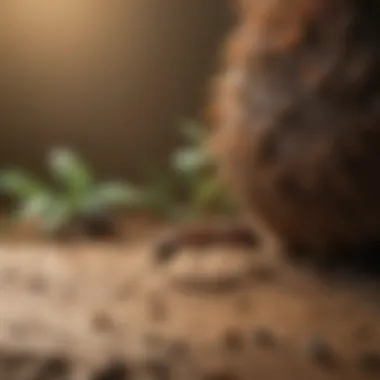

Egg Stage
The egg stage is a crucial part of the ant life cycle, laying the foundation for future generations. Ant eggs are typically small, oval-shaped, and can be white or transparent, making them hard to detect. This stage plays a significant role, as it determines the colony's ability to expand and survive.
A key characteristic of the egg stage is that it requires the right environmental conditions to hatch successfully. High humidity and mild temperatures are preferred. In this article, understanding the egg stage is beneficial because it represents the starting point of an infestation; recognizing signs of eggs can signal early action for homeowners.
The unique feature of ant eggs is their vulnerability. They are highly sensitive to disturbances and environmental changes. If not properly cared for by worker ants, which are essential for keeping them clean and hydrated, these eggs may fail to develop into larvae, significantly affecting the colony's growth.
Larva Stage
After hatching, ants enter the larva stage, which lasts several weeks depending on the species and environmental conditions. During this time, larvae are typically fed by worker ants, who bring them food, primarily proteins and carbohydrates. A notable aspect of this stage is that larvae do not possess legs and rely on their caretakers for mobility and nourishment.
Larvae have the key characteristic of being quite voracious feeders. They grow rapidly, growing their size exponentially before entering the pupa stage. This stage's importance lies in how it contributes to the colony's strength; healthy larvae lead to vigorous pupae.
An interesting feature of the larva stage is its development speed, which can vary based on food availability and environmental factors. In urban settings where food sources are plentiful due to human activity, larvae can thrive, leading to fast colony expansion.
Pupa Stage
Transforming from larva, ants enter the pupa stage, which can be likened to a cocoon phase. The pupae often appear white and soft. During this time, they undergo a complete metamorphosis where significant changes in their structure and function take place.
The key characteristic of the pupa stage is the inactivity; the ants do not feed or move, relying heavily on the colony's resources until they mature. This stage is beneficial in the context of controlling populations, as it represents a window where no foraging behaviors are evident.
One distinctive feature of pupae is that they resemble adults in form but are pale and soft. This facilitates identification, as they can sometimes blend with surrounding debris, making it harder to spot during infestations. Understanding this stage aids homeowners in identifying areas of the home where ants are particularly active, allowing for more targeted control methods.
Adult Stage
Finally, ants reach the adult stage, where they exhibit their distinctive characteristics and take on roles within the colony. Worker ants, queens, and males all emerge from the pupa, each with specific functions. The adult stage is vital because it encompasses foraging, nest building, and reproduction—the core activities that keep the colony thriving.
The key characteristic of adult ants is their diverse roles; workers maintain the nest and care for the young, while queens focus on reproduction. This division of labor is a significant aspect of an ant colony's efficiency. Moreover, adults can defend their territory fiercely, highlighting their aggressive side when threatened.
A unique feature of adult ants is their longevity, particularly in the case of queens which can live for several years, ensuring the survival of the colony. Understanding the adult lifecycle stage is crucial for homeowners, as it gives insights into the population dynamics and when to intervene with management efforts effectively.
Behavioral Patterns
Understanding the behavioral patterns of tiny household ants is key to comprehending their impact on our daily lives. These patterns reveal how ants interact with their environment, locate food sources, and communicate with one another. Insights into ant behavior can assist homeowners in developing effective management strategies, helping to prevent these industrious creatures from invading personal spaces.
Foraging Behavior
Foraging behavior is a fascinating aspect of ant life. When searching for food, ants employ a method known as tandem running. This technique not only shows the coordination among ants but also how they rely on each other to locate resources. The foraging process is strategic; ants leave a pheromone trail behind them, marking the path they’ve traveled. This trail serves as a beacon for other ants, creating a collective understanding of where food is abundant.
The efficiency with which ants forage is noteworthy. An army of tiny workers can transform the most barren ground into an open buffet in no time. Understanding this behavior means homeowners can identify strengths in ant invasions and thwart them more effectively. By keeping food stored tightly and cleaning up spills immediately, one can make their home less appealing.
Communication Methods
Ants are social creatures, and their communication methods play a vital role in their colony's success. Two primary forms of communication stand out: chemical signals and tactile communication.
Chemical Signals
Chemical signals, primarily pheromones, act as a language among ants. These volatile substances carry information regarding food sources, danger, or even mating opportunities. Pheromones are particularly effective because they can cover great distances and linger in the environment.
- Key characteristic: Pheromones can convey complex messages, providing a detailed map of surrounding events or resources.
- Advantages: This method allows for rapid responses and large-scale coordination within colonies. Even when a scout encounters a food source, the subsequent pheromone trail can rally hundreds of other ants to the feast.
- Disadvantages: However, the reliance on chemical signals makes ants susceptible to confusion if competing pheromones are present.
In the context of studying household ants, understanding chemical signaling can help in devising traps or deterrent methods that interfere with their communication, ultimately disrupting their ability to forage effectively.
Tactile Communication
Tactile communication relies on physical contact. Workers often touch and prod each other with their antennae, sharing vital information about food or colony activities. This form of communication occurs predominantly in situations where close proximity allows for direct exchange of information.
- Key characteristic: This type of interaction is immediate and can be more effective over short distances compared to pheromones.
- Advantages: Tactile communication cultivates a robust social structure within colonies, ensuring that all workers are informed quickly of relevant happenings.
- Disadvantages: One limitation is that tactile communication depends heavily on the ants being nearby each other. If a colony expands too much, parts may become isolated from each other.
Understanding these communication methods enables homeowners to anticipate the behavior of ants within their spaces. By knowing how ants interact and share information, it becomes clearer how to implement strategies that can effectively combat infestations.
Ants may be small, but their coordination and communication skills show us that even the tiniest of creatures can have a big impact on our environment.
Ecological Significance
Understanding the ecological significance of tiny household ants is essential not just for personal awareness, but for appreciating their contribution to the wider environment. These creatures are often viewed as pesky intruders in our homes, yet they play a variety of critical roles in ecosystems, helping with processes that benefit all life forms.
Role in the Ecosystem
Tiny household ants participate in key ecological processes that aid in maintaining the balance of their surroundings. Here are several important roles they fulfill:
- Soil Aeration: As ants burrow and construct their nests, they aerate the soil, promoting better water infiltration and root development for plants. This action enriches the soil's quality and enhances its ability to nourish crops and wild vegetation.
- Nutrient Recycling: Ants are brilliant recyclers. They regularly collect organic matter, including dead insects and plant materials. By breaking these down, they foster nutrient recycling back into the ecosystem, which supports plant growth and soil health.
- Seed Dispersal: Many ant species assist in seed dispersal. They carry seeds back to their nests, where some are consumed and others are discarded, allowing them to germinate in nutrient-rich environments. This process enhances plant biodiversity and can even contribute to the resilience of landscapes.
"Ants are the unsung heroes of our ecosystems, quietly keeping nature in balance while we go about our daily lives."
In addition to these functions, ants serve as prey for various animal species. Birds, mammals, and other insects rely on ants as a food source, placing them in the middle of the food chain and showcasing their importance in maintaining ecological dynamics.
Ants as Bioindicators
Another interesting aspect of tiny household ants is their role as bioindicators, signifying the health of their environment. They adapt quickly to changes in habitat and respond to various environmental factors. Here’s how they help us take the pulse of the ecosystem:
- Sensitive to Pollution: Ants can serve as indicators of soil and air quality. Changes in their behavior or population density may indicate environmental stressors such as pollution or habitat destruction. A decline in ant populations, for example, might warrant further investigation into environmental health.
- Temperature and Humidity Indicators: Variations in ant activity can also reflect changes in climate. Some species thrive in specific temperature ranges or humidity levels, thus their presence (or lack thereof) may inform researchers about climate fluctuations and their impacts on biodiversity.
- Habitat Changes: Observing the types of ants in an area can signal shifts in habitat conditions. Specific species often flourish under certain conditions, while others might dwindle, offering clues about ecological changes and potential conservation needs.
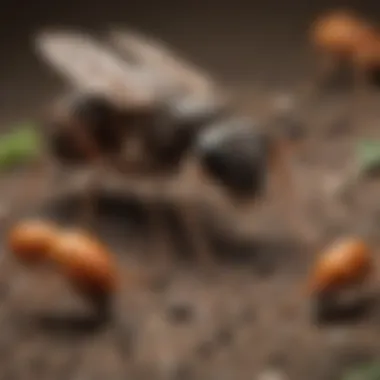

The intricate connections tiny household ants share with their environment underscore their significance beyond mere nuisance. By recognizing their vital functions and contributions to ecological health, we can foster a more enlightened perspective on these small yet impactful creatures.
Challenges of Infestation
The presence of tiny household ants in our living spaces can raise significant concerns for home dwellers, particularly because these insects are more than just a nuisance. The challenges posed by an ant infestation extend to both the health and cleanliness of our homes. Understanding these challenges helps in formulating effective strategies for prevention and control, ultimately safeguarding well-being and property.
When tiny ants invade a home, they often do so with remarkable efficiency. They can slip through the smallest cracks and openings, making it easy for them to establish colonies inside. Understanding this ability is key to mitigating their impact.
"An ounce of prevention is worth a pound of cure" – Benjamin Franklin
This old saying rings true here, as the first step in managing an infestation is prevention.
Common Entry Points into Homes
Tiny household ants are savvy little creatures; they can find their way into our kitchens and living areas with minimal effort. Common entry points include:
- Cracks in Walls: Even a tiny hairline fracture can serve as a gateway. Ants can squeeze through these gaps, leading them directly into living space.
- Open Windows and Doors: Unscreened windows and improperly sealed doors are often inviting, especially in warmer months.
- Utility Lines: Ants are adept at traveling along utility lines, such as water pipes or electric conduits, to gain entry.
- Foundations: The intersection of walls and foundations often contains small openings that ants can exploit.
Taking preemptive action, such as sealing these openings with caulk and ensuring windows and doors are securely fitted with screens, can greatly reduce the likelihood of an infestation.
Impact on Human Health and Property
The implications of a tiny ant infestation are not to be taken lightly. Homeowners often focus on the visible traces left by ants, such as trails or food contamination, but the deeper impacts involve health and property degradation.
- Health Risks: While household ants generally do not pose a direct health risk, they can contaminate food sources. Certain species, like the Odorous House Ant, are known to carry pathogens as they forage. This can provoke foodborne illnesses, which can be especially dangerous in households with young children or elderly members.
- Structural Damage: Although most tiny household ants do not cause structural damage, species such as Carpenter Ants can chip away at wood materials, potentially leading to significant repair costs over time.
- Psychological Impact: Having ants in the home can create feelings of discomfort and invasion. This psychological burden can be particularly heavy on parents or caregivers who feel the need to maintain a clean space.
Management Strategies
Effectively managing tiny household ants is critical not only for keeping your living environment comfortable but also for safeguarding your property from potential damage. These uninvited guests can be notorious for infiltrating kitchens and pantries, scouting for crumbs or residual food sources. Addressing this problem requires a nuanced understanding of various strategies that can be employed, balancing both preventive measures and remedial actions. The aim is to create an environment that discourages infestations and promotes household harmony.
Prevention Techniques
Preventing Food Sources
Preventing food sources is perhaps the cornerstone of any management strategy aimed at uprooting ant infestations. Ants are driven by the need to forage, and if there’s nothing to sustain them, they'll likely seek their next meal elsewhere. The key characteristic of preventing food sources lies in its simplicity; maintaining a clean kitchen and dining area does wonders.
- Regularly wipe down surfaces to eliminate crumbs and spills.
- Store food in airtight containers to prevent access.
- Dispose of garbage promptly and encase it in sealed bags.
This method stands out as a beneficial choice because it not only addresses the immediate issue but also enriches everyday habits around cleanliness and tidiness. One unique feature of preventing food sources is that it's an ongoing effort that benefits the entire household. However, some might find it challenging to maintain, especially in busy households where children are around. Thus, consistency is crucial for success.
Sealing Entry Points
Sealing entry points comes next and is another significant aspect of a successful management strategy. In many cases, ants can enter homes through minuscule cracks and crevices. The critical aspect of this technique is home fortification to thwart their relentless ventures indoors.
- Inspect and seal gaps around doors, windows, and foundations.
- Utilize caulk or weather stripping for a lasting solution.
- Ensure screens on windows and doors are intact and without holes.
Sealing entry points is popular because it creates a physical barrier to potential infestations, proving to be a worthwhile investment in preserving household integrity. The unique advantage here is the proactive nature of the measure; once done, just periodic checks suffice. That said, it may require some time and effort upfront, making it sometimes less appealing for certain homeowners.
Natural Remedies
Exploring natural remedies can be another effective approach in the fight against ants. Many homeowners prefer this route as it limits exposure to harsh chemicals while still packing a punch against these pests. Popular options include:
- Vinegar: A solution of equal parts vinegar and water can deter ants when sprayed around entry points and common pathways.
- Essential Oils: Tea tree oil, peppermint oil, and lemon oil are known to repel ants; just mix a few drops with water in a spray bottle.
These remedies are favorites among eco-conscious individuals, although they may require frequent application and might not be as effective for large infestations, sometimes necessitating additional support.
Chemical Control Options
When natural methods fall short, some may turn to chemical control options. It's critical to choose wisely from the wide array of products available. Researching and selecting products that target specific ant species can lead to more successful results.
- Baits: These contain slow-acting poisons ants take back to their colonies, thereby killing off large numbers over time.
- Sprays: Immediate contact insecticides can help eliminate visible ants quickly but should be used with caution, especially around food.
While chemical options offer quick relief, they also come with risks. It's essential to follow usage instructions closely and consider the potential impact on pets and children. Choosing low-risk formulations can help mitigate these concerns while effectively addressing the ant problem.
Remember, the first line of defense against household ants is consistent management, and combining strategies often yields the best results.
Epilogue
The study of tiny household ants is a window into understanding broader ecological principles, as these seemingly insignificant creatures hold intricate roles within our environment. Their impact goes beyond mere annoyance when they invade our homes; understanding their behavior, biology, and ecological significance is crucial for effective management. By comprehensively exploring their life cycles and social structures, it becomes evident that these data points serve numerous purposes.
This article has articulated key elements, such as the importance of recognizing their entry points into homes, understanding their foraging behaviors, and appreciating their role in the ecosystem. The reader, particularly housewives and homeowners, can apply these insights practically. For instance, knowing how to restrict food sources or seal possible entry points can lead to effective prevention strategies. It's about merging knowledge with action to foster an environment that is both conducive to nature and safe for habitation.
Here are a few benefits and considerations drawn from this discussion:
- Holistic Understanding: Recognizing the intricate social structures of these ants can help us appreciate their roles.
- Preventive Measures: Effective management strategies can reduce the emotional and financial impact of infestations.
- Positive Interactions: With the right approach, it is possible to coexist rather than merely repel.
Ultimately, the knowledge gleaned from studying tiny household ants fosters a more profound appreciation for their place in our ecosystem. It encourages a shift in perspective from viewing them solely as pests to recognizing their beneficiaries in maintaining ecological balance.
Recapitulation of Key Points
The insights provided throughout this article underscore the complex interactions between tiny household ants and their environments. Key takeaways include:
- Diverse Species: An array of ant species resides within household settings, each with unique behavioral and biological characteristics.
- Life Cycle Awareness: Understanding the life stages of ants aids homeowners in identifying infestations early.
- Communication Methods: Chemically-driven communication is a major factor in their social structure.
- Preventative Practices: Simple home remedies and strategies can significantly reduce infestation risks.
- Ecological Roles: These ants contribute to soil health and predator-prey dynamics, emphasizing their importance beyond human annoyance.
By focusing on these points, readers are better equipped to deal with the challenges posed by these tiny invaders.
Future Directions in Ant Research
As we move into a future where ecosystems face mounting pressures from climate change and urbanization, research on tiny household ants is set to expand. The following areas are especially promising:
- Adaptive Foraging Behavior: Studies to understand how changing environments influence their foraging strategies could yield insights into their adaptability.
- Microbial Associations: Investigating the symbiotic relationships between ants and microbes may reveal additional benefits provided by these insects in our homes.
- Impact of Urbanization: Examining how urban landscapes influence ant species diversity and behaviors can help develop urban management strategies.



